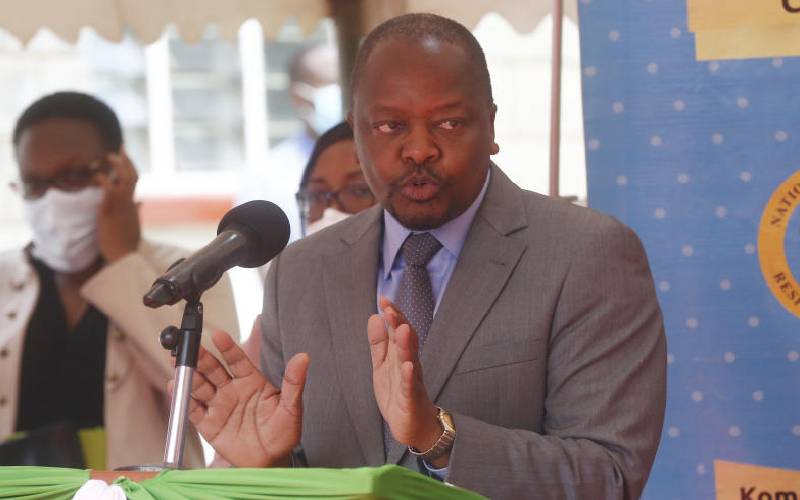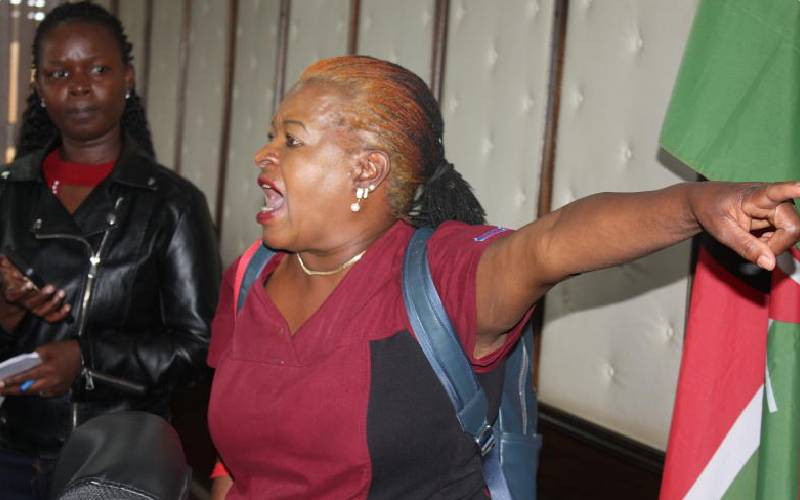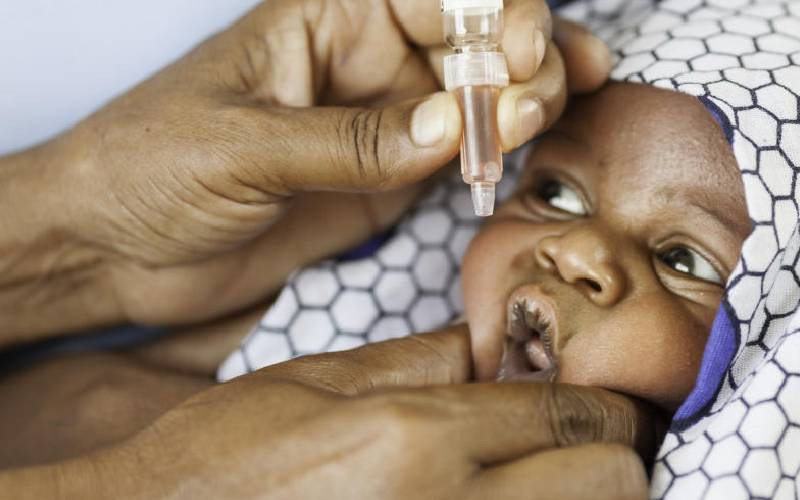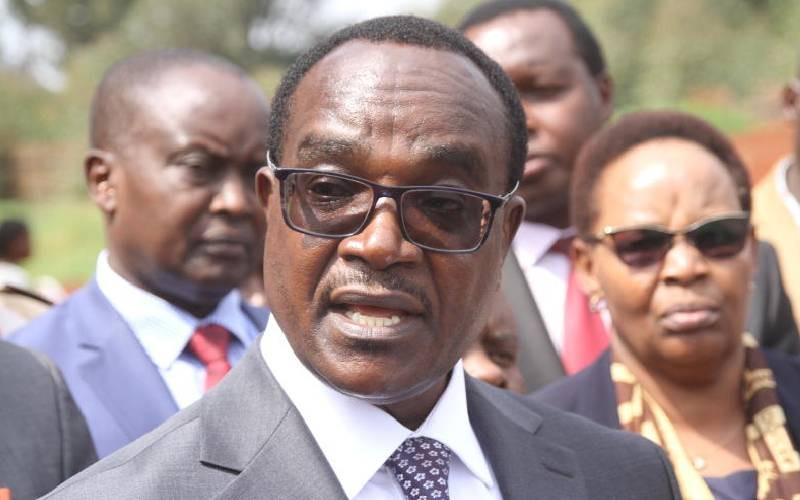
Kenya has recorded 388 more Covid-19 positive cases in the past 24 hours raising the country's total caseload to 41, 546.
In a statement sent to media houses by the Ministry of Health on Sunday, Health Cabinet Secretary Mutahi Kagwe (pictured) said the new cases are from 4,287 samples which push the country’s cumulative tests to 591, 198.
In terms of gender, 284 are male and 104 are female while the youngest case is four-year-old and the oldest is aged 85.
Of the new cases, 383 are Kenyans while five are foreigners.
On a positive note, 61 patients recovered with 23 on the home-based care programme while 40 were discharged from various hospitals bringing the total number of recoveries to 31,000.
On a sad note, Kagwe said six patients died from Covid-19 bringing Kenya’s fatalities to 766.
Distribution
Nakuru leads with 86 cases followed by Nairobi 84, Mombasa 51, Trans Nzoia 49, Kiambu 29, Kisumu 17, Kericho 11, Meru 10, Busia 10, Bungoma 8, Machakos 7, Garissa 5, Kajiado 3, Tharaka Nithi 3, Nyamira 3, Nyeri 2, Siaya 2, Makueni 2, Nandi 2, Kwale 2, and Nyandaru 2.
Uasin Gishu recorded 2 cases, Bomet 1, Kirinyaga 1, Laikipia 1 and Kili? 1.
The 86 cases in Nakuru are from Nakuru East (24), Gilgil (22), Naivasha (20), Nakuru West (7), Rongai (4), Kuresoi North (3), Kuresoi South and Subukia (2) cases each, Molo and Nakuru North (1) case each.
In Nairobi, the 84 cases are from Lang’ata (13), Embakasi Central, Kamkunji and Makadara (8) cases each, Kasarani, Kibra and Westlands (6) cases each, Dagoretti South and Embakasi West (5) cases each, Dagoretti North and Embakasi East (4) cases each, Embakasi South (3), Embakasi North, Roysambu and Ruaraka (2) cases each, while Mathare and Starehe recorded (1) case each.
In Mombasa, the 51 cases are from Kisauni (20), Jomvu (16), Mvita (10), Changamwe (3), Likoni and Nyali (1) case each
In Trans Nzoia county, all the 49 cases came from Saboti
In Kiambu, the 29 cases are from Thika (18), Lari (4), Gatundu, Kiambaa and Ruiru (2) cases each and Githungui (1).
Stay informed. Subscribe to our newsletter
In Kisumu, the 17 cases emerged from Kisumu Central (13) and Kisumu East (4).
In Kerucho, the 11 cases are from Ainamoi (8) and Belgut (3) cases.
Meanwhile, a report has revealed that Europe was the origin of the dominant coronavirus strain in Kenya.
The research conducted by Kemri-Wellcome Trust Research Programme in Kilifi shows that the dominant strain of the deadly virus in Kenya’s Coast was of European lineage, consistent with what has been reported in some parts of the world, including several African countries.
This specific strain (lineage B.1) of the coronavirus was first identified globally on February 15 and it accounted for 45 out of the 76 introductions in Kenya.
“Though multiple lineages were introduced in coastal Kenya within three months following the initial confirmed case, none showed extensive local expansion other than cases characterised by lineage B.1,” reads the report dated October 7.
In the findings, at least 274 SARS-Cov-2 samples were collected in Mombasa, Kwale, Taita Taveta and Kilifi counties, with European lineage accounting for 82.1 per cent of the cases.
Other lineages were detected from screened returning travellers at the Kenya-Tanzania border though they did not lead to established transmission.
 The Standard Group Plc is a
multi-media organization with investments in media platforms spanning newspaper
print operations, television, radio broadcasting, digital and online services. The
Standard Group is recognized as a leading multi-media house in Kenya with a key
influence in matters of national and international interest.
The Standard Group Plc is a
multi-media organization with investments in media platforms spanning newspaper
print operations, television, radio broadcasting, digital and online services. The
Standard Group is recognized as a leading multi-media house in Kenya with a key
influence in matters of national and international interest.
 The Standard Group Plc is a
multi-media organization with investments in media platforms spanning newspaper
print operations, television, radio broadcasting, digital and online services. The
Standard Group is recognized as a leading multi-media house in Kenya with a key
influence in matters of national and international interest.
The Standard Group Plc is a
multi-media organization with investments in media platforms spanning newspaper
print operations, television, radio broadcasting, digital and online services. The
Standard Group is recognized as a leading multi-media house in Kenya with a key
influence in matters of national and international interest.








